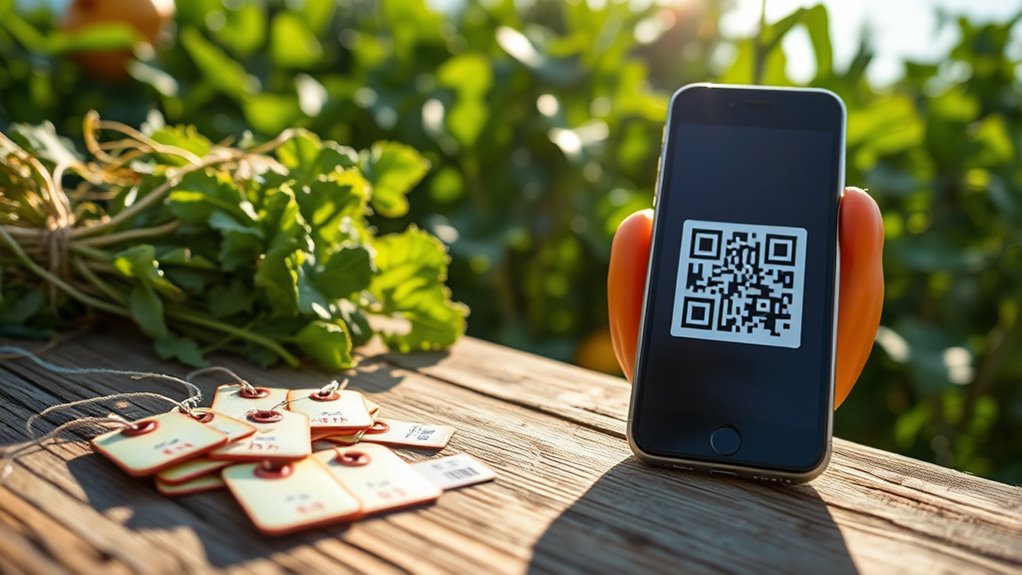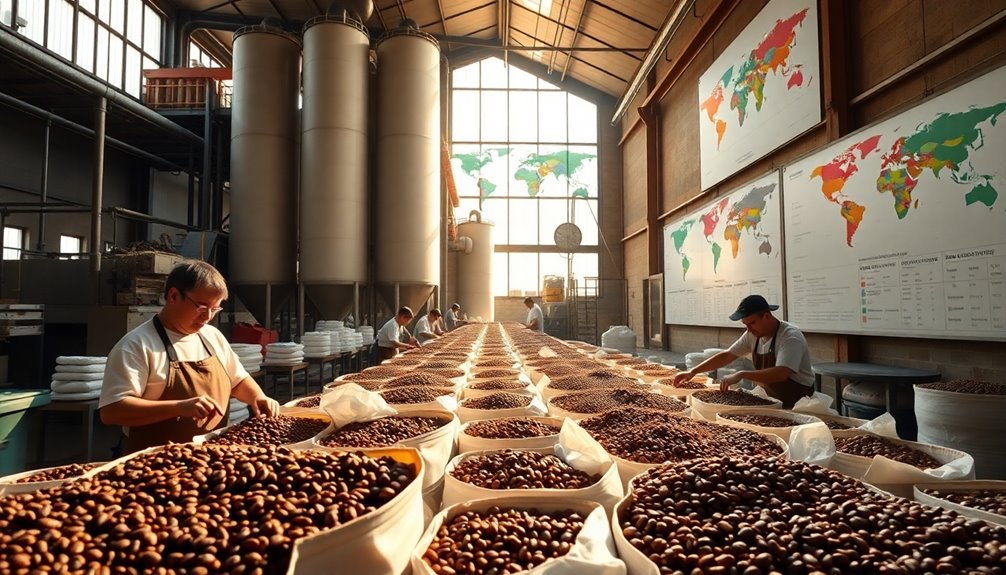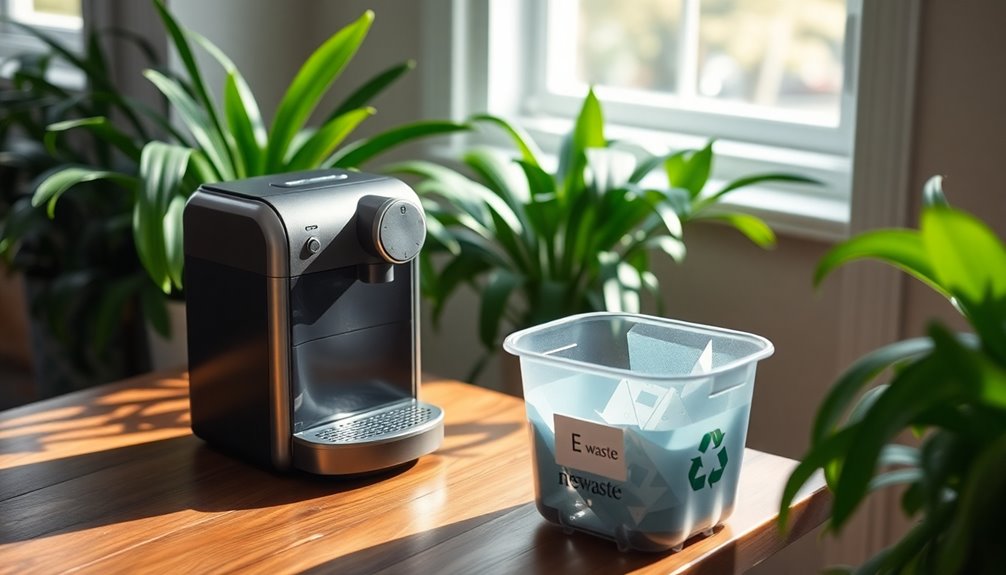Traceability basics involve using Farm IDs, lot numbers, and QR codes to track products throughout the supply chain. Farm IDs serve as unique identifiers tied to specific farms, while lot numbers mark particular product batches. QR codes link physical items to detailed digital records about origin, safety, and certifications. Together, these tools guarantee transparency, safety, and quick identification during recalls or quality checks. To discover how these elements work together, keep exploring the key concepts behind traceability.
Key Takeaways
- Farm IDs uniquely identify farms, linking products to their origin and production practices.
- Lot numbers track specific product batches through manufacturing, distribution, and retail channels.
- QR codes connect physical products to digital records, providing access to origin, certifications, and manufacturing details.
- Traceability systems enhance transparency, enabling quick recalls and regulatory compliance.
- Overall, these tools ensure product safety, authenticity, and build consumer trust in the supply chain.

Have you ever wondered how products get from the manufacturer to your hands with quality and safety assured? The answer lies in the world of traceability, a system that tracks products through every stage of production and distribution. At its core, traceability guarantees supply chain transparency, giving you confidence that what you’re buying is safe, authentic, and ethically produced. It also helps companies meet regulatory compliance, which is essential for avoiding penalties and maintaining consumer trust. Understanding the basics of farm IDs, lot numbers, and QR codes can clarify how this system works to keep products safe and reliable.
Farm IDs serve as the starting point in the traceability process. When a crop is harvested or livestock is raised, each farm is assigned a unique identifier. This ID links back to specific details about the farm’s location, practices, and production methods. By attaching these IDs to products early on, companies can trace the entire journey of a product back to its source. This level of detail supports supply chain transparency by providing visibility into where ingredients or raw materials originated. If a problem arises — say, contamination or a quality issue — companies can quickly identify which farm supplied the affected batch, streamlining recalls and minimizing risks to consumers.
Lot numbers play an essential role once products leave the farm. These are unique codes assigned to a batch of product, whether it’s a shipment of vegetables or a batch of processed foods. Lot numbers help companies track specific groups of products through the manufacturing process, distribution, and retail. This traceability makes it easier to identify and isolate affected products if safety concerns emerge. It also supports regulatory compliance by ensuring that companies can produce detailed records of their inventory. When authorities request information during inspections or incidents, lot numbers allow companies to provide precise data quickly, demonstrating adherence to safety standards and legal requirements.
QR codes are the modern tool that bridges physical products with digital records. By scanning a QR code, you or a retailer can access detailed information about the product’s origin, manufacturing date, and quality certifications. These codes enhance supply chain transparency by making product histories accessible in real time. They also reinforce regulatory compliance, as companies are required to maintain accurate and accessible records of their products. QR codes empower consumers to verify product authenticity and safety, creating an added layer of trust and accountability.
Frequently Asked Questions
How Do Farm IDS Differ Internationally?
International standards for farm IDs vary because each country has its own system for farm registration. You’ll find that some nations use a centralized database, while others rely on regional or local identifiers. These differences can affect traceability, but generally, countries aim to create unique farm IDs to guarantee accurate tracking across borders. So, understanding how farm IDs differ helps you navigate global food safety and traceability efforts effectively.
Can QR Codes Be Reused for Multiple Products?
Think of QR codes like fingerprints—they’re designed to be unique for each product. You can’t reuse QR codes for multiple products if you want reliable traceability, as reuse violates typical policies and compromises data integrity. To guarantee authenticity, follow strict reuse policies, creating a new QR code for each item. This way, your traceability remains clear, just like a signature that can’t be mistaken or duplicated.
What Are the Costs of Implementing Traceability Systems?
You’ll find that implementing traceability systems involves costs like software, hardware, and training. A thorough cost analysis helps you understand these expenses and plan accordingly. Be aware of implementation challenges, such as integrating new technology with existing processes and ensuring staff compliance. While initial costs can be significant, the long-term benefits of improved traceability, product safety, and regulatory compliance often outweigh these investments.
How Secure Is Data Stored in Traceability Systems?
You might find it reassuring that your traceability data is quite secure, especially with data encryption protecting sensitive information and strict user access controls limiting who can view or modify data. While no system is completely invulnerable, implementing strong cybersecurity measures and regularly updating protocols considerably reduce risks. So, with proper safeguards in place, your traceability system offers a reliable way to track and protect essential farm information.
Are There Industry Standards for Lot Number Formats?
Yes, industry standards for lot number formats exist, but you’ll find standardization challenges due to varying formatting conventions across sectors. You should be aware that different organizations often adopt their own conventions, making data integration and tracking more complex. To improve consistency, it’s crucial to follow established guidelines where available, ensuring your lot numbers are clear, unique, and easily decipherable, which ultimately enhances traceability and compliance.
Conclusion
By understanding farm IDs, lot numbers, and QR codes, you hold the key to transparency in the supply chain. Think of traceability as a thread weaving through each step, connecting origin to consumer, ensuring trust and accountability. As you implement these tools, remember: it’s not just about tracking; it’s about weaving a fabric of integrity that safeguards everyone involved. Embrace these basics, and watch your supply chain become a tapestry of reliability.









